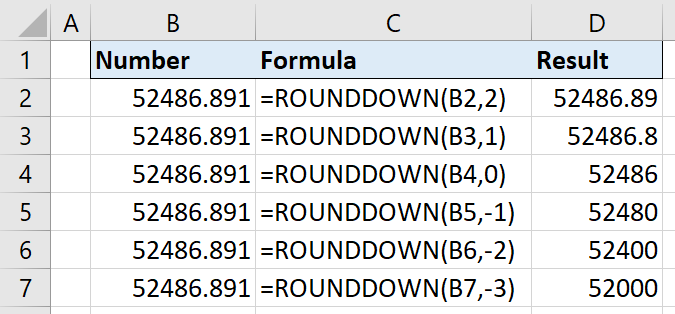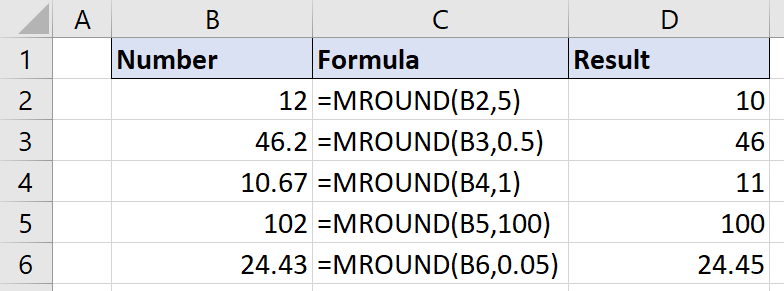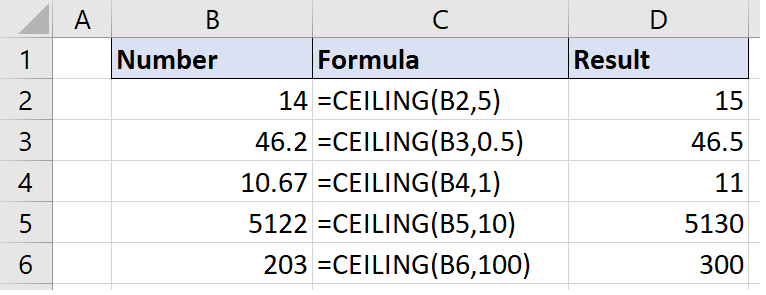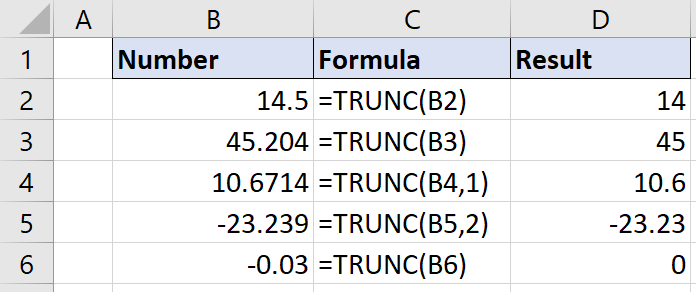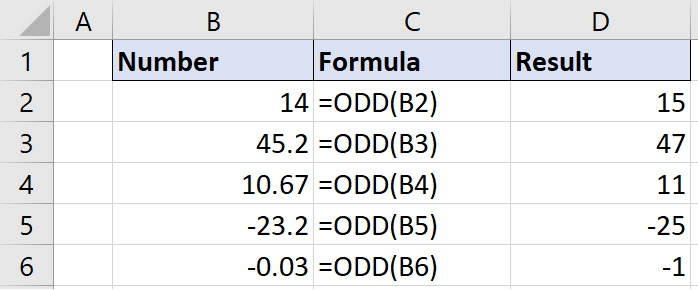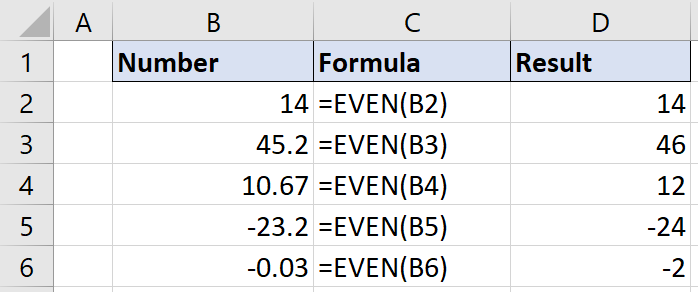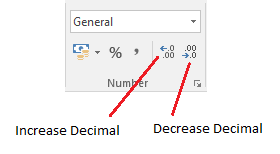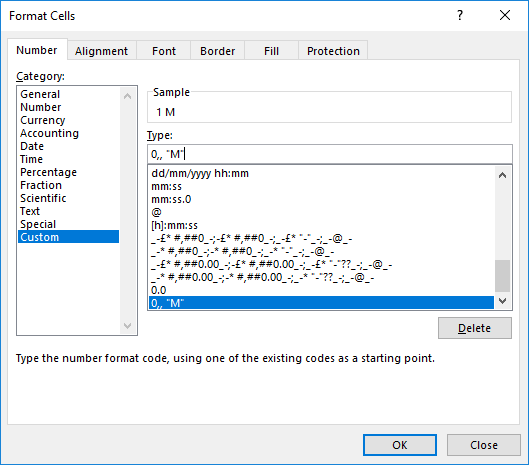There are many ways in which you can round numbers in Excel. These techniques will typically involve formatting the values, or using formulas. This post on How to round numbers in Excel will look at 10 round functions in Excel, and then look at some formatting techniques.
This is a guest post by Alan Murray from Computergaga.
Key Takeaways
- Different Functions for Different Rounding Needs – Excel offers multiple rounding functions like ROUND, ROUNDUP, and ROUNDDOWN, each serving different purposes based on rounding direction and precision.
- Rounding to Multiples with MROUND, CEILING, and FLOOR – Use MROUND to round to the nearest multiple, CEILING to always round up to a multiple, and FLOOR to always round down.
- Truncating vs. Rounding – The TRUNC function removes decimal places without rounding, while INT rounds down to the nearest whole number for positive numbers and rounds up for negative numbers.
- Rounding to Odd or Even Numbers – The ODD and EVEN functions round numbers up to the nearest odd or even integer, useful for specific engineering or statistical calculations.
- Using Excel Formatting Instead of Formulas – Excel’s number formatting options allow you to display rounded values without changing the actual data, preserving accuracy for calculations.
Table of Contents
The ROUND Function
The ROUND function in Excel will return a number rounded to a specified number of digits.
You can round a number to the right or left of the decimal point. So whether you want to round to a specific number of decimals, or to the nearest hundredth, the ROUND function can help.
The ROUND function looks like below;
=ROUND(number, num_digits)
The number is the number that you want to round, and then num_digits is how many digits you want to round the value to.
You can enter a positive or negative value for num_digits as shown in the examples below.
A positive value rounds to the right of the decimal point, and a negative value rounds to the left of the decimal point (i.e. to the nearest 10, 100, 1000, etc). You can also enter 0 to simply round to the nearest integer.
The ROUND function will round a number of 5-9 up, and a number of 1-4 down.
ROUNDUP Function
The ROUNDUP function returns a number rounded up to a specified number of places.
It rounds all numbers from 1 to 9 up.
=ROUNDUP(number, num_digits)
ROUNDDOWN Function
The ROUNDDOWN function returns a number rounded down to a specified number of places.
It rounds all digits from 1 to 9 down.
=ROUNDDOWN(number, num_digits)
Now that you have learned how to round numbers in Excel, let’s move to related function – MROUND.
MROUND Function
The MROUND function returns a number rounded to a specified multiple.
For example, this function can be used to;
- Round a price to the nearest 0.05
- Round a time to the nearest 30 minutes.
The MROUND function requires the number you want to round, and the multiple to round it to.
=MROUND(number, multiple)
Check out this video of the MROUND function being used to round a time to the nearest 15 minutes.
CEILING Function
The CEILING function will round a number up to the nearest multiple that you specify.
It works like the MROUND function, but ensures that the number is always rounded up.
FLOOR Function
The FLOOR function works like the CEILING function but ensures that a number is rounded down to the nearest multiple that you specify.
For example, this function could be used to;
- Round a year down to the nearest decade
- Round a price down to the nearest 0.5.
INT Function
The INT function rounds a number down to the nearest integer. This function always rounds down, so a positive number gets smaller, and a negative number becomes more negative.
The INT functions just requires the number to round.
=INT(number)
There are many interesting uses for the INT function such as to help calculate the days, hours and minutes elapsed between two dates (shown in the video below), or to help create a 5 star rating system.
TRUNC Function
The TRUNC function extracts the part of a number specified by a given number of digits. Technically this is not a rounding function, but I feel it deserves to be spoken about along with these other functions.
To use the TRUNC function you need to provide the number to truncate, and the number of digits to truncate to.
=TRUNC(number, [num_digits])
Specifying the number of digits to truncate to is optional, and if not specified 0 is used.
The TRUNC function is commonly used to extract the integer part of a number, just like the INT function. However, they differ in the way that TRUNC will simply truncate the integer portion, whilst INT will round down to the nearest integer.
To get only the decimal portion of the number you could do;
=A1-TRUNC(A1)
ODD Function
The ODD function returns the next odd integer after rounding a number away from zero.
Both positive and negative numbers are rounded away from zero, so positive numbers get bigger, and negative numbers become smaller.
The ODD function just requires the number to round.
=ODD(number)
EVEN Function
The EVEN function works in the same way as ODD, but returns the next even integer after rounding away from zero.
Extra Method: Use the Excel Formatting Options
In this blog, you can also use how to round numbers in Excel without formula. By using the formatting options of Excel, you can change the presentation of the number, without actually changing the number.
So you could hide the decimals, or present a value to the nearest thousand, but it will not affect the original number.
The simplest way to show or hide the decimals in a range of cells is to use the Increase Decimal and Decrease Decimal buttons on the Home tab.
When the decimals are hidden, Excel will round the values in the cell down for numbers 1-4, and up for numbers 5-9. This is just like the ROUND function, but does not change the value like ROUND.
Using this technique, you will learn how to round numbers in Excel without formula.
Let’s look at another example. We can use the custom formatting options of Excel to display a number as thousands or millions.
- Open the Format Cells dialog by pressing Ctrl + 1.
- Ensure the Number tab is selected and then click Custom.
- In the Type field enter 0, “K” to display as thousands or 0,, “M” to display as millions.
The decimal places buttons can be used to show more detail if desired.
Frequently Asked Questions
What is the difference between ROUND, ROUNDUP, and ROUNDDOWN in Excel?
ROUND rounds a number normally based on the nearest value, ROUNDUP always rounds the number up, ROUNDDOWN always rounds the number down.
How does the MROUND function work?
The MROUND(number, multiple) function rounds a number to the nearest multiple of the specified value. For example, =MROUND(27, 5) returns 25, as it is the nearest multiple of 5.
When should I use TRUNC instead of ROUND?
TRUNC removes decimal places without rounding, making it useful when you need only the integer part of a number without rounding up or down.
How can I round numbers to the nearest 10, 50, or 100 in Excel?
Use the MROUND function with a specified multiple, such as =MROUND(A1, 50), to round values to the nearest 50.
What’s the difference between INT and FLOOR?
INT rounds a number down to the nearest whole number. FLOOR rounds down to the nearest specified multiple (e.g., =FLOOR(47, 5) returns 45).
Conclusion
Excel provides many ways on how to round numbers in Excel to a specific integer, or to a number of decimal places So whatever your requirements, Excel has a way.
The various rounding functions of Excel can be used to change and present the value in the best way possible. Be sure to understand the difference and choose the right one to prevent unexpected results.
Sometimes you may not want to affect the number, so the custom formatting feature of Excel is your ally in these moments.
About the Author
Alan is the founder of Computergaga. When he is not training people in Excel he can normally be found running, or spending time with his wife and two children.

Bryan
Bryan Hong is an IT Software Developer for more than 10 years and has the following certifications: Microsoft Certified Professional Developer (MCPD): Web Developer, Microsoft Certified Technology Specialist (MCTS): Windows Applications, Microsoft Certified Systems Engineer (MCSE) and Microsoft Certified Systems Administrator (MCSA).
He is also an Amazon #1 bestselling author of 4 Microsoft Excel books and a teacher of Microsoft Excel & Office at the MyExecelOnline Academy Online Course.


